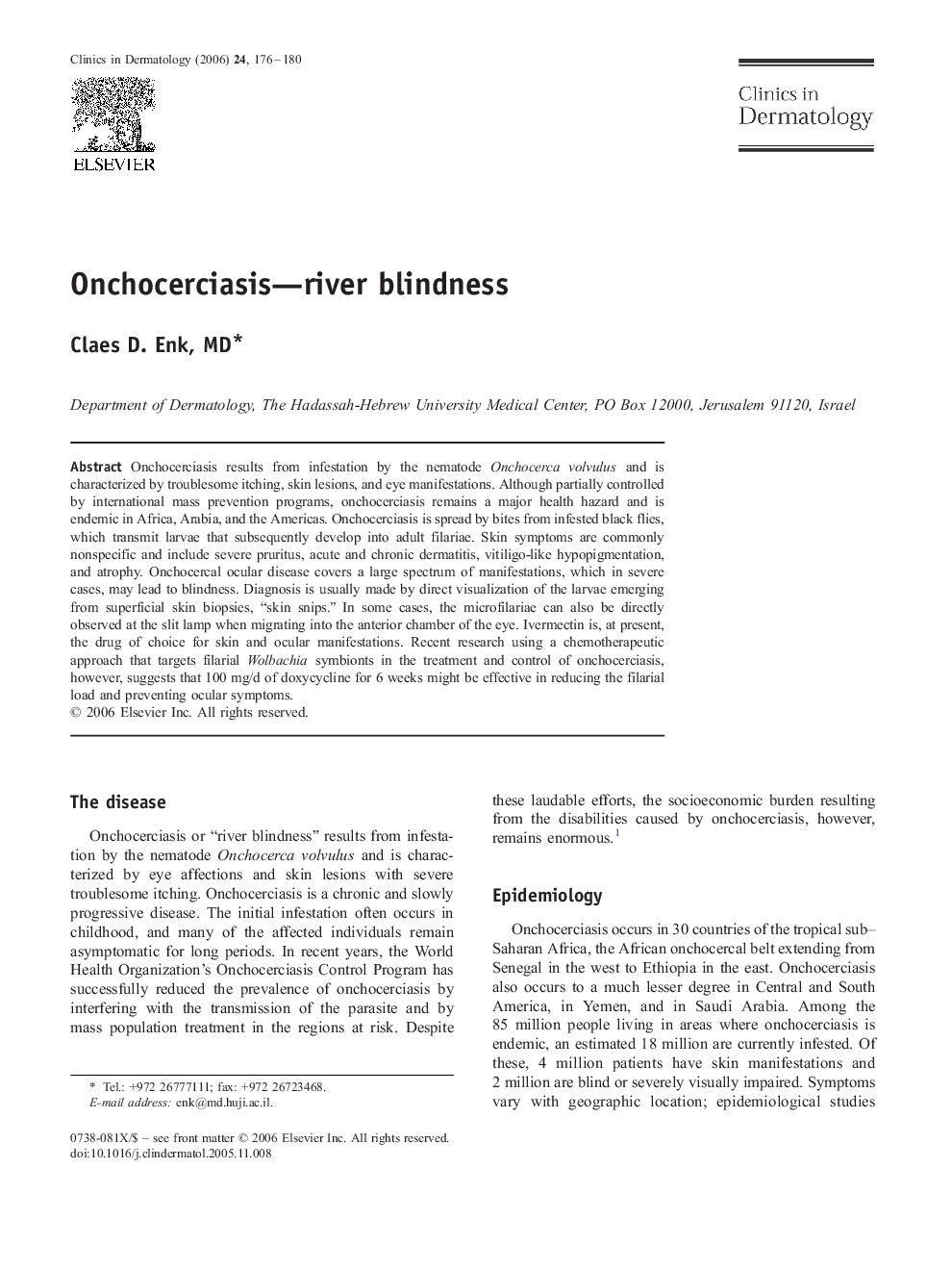| Article ID | Journal | Published Year | Pages | File Type |
|---|---|---|---|---|
| 3195286 | Clinics in Dermatology | 2006 | 5 Pages |
Onchocerciasis results from infestation by the nematode Onchocerca volvulus and is characterized by troublesome itching, skin lesions, and eye manifestations. Although partially controlled by international mass prevention programs, onchocerciasis remains a major health hazard and is endemic in Africa, Arabia, and the Americas. Onchocerciasis is spread by bites from infested black flies, which transmit larvae that subsequently develop into adult filariae. Skin symptoms are commonly nonspecific and include severe pruritus, acute and chronic dermatitis, vitiligo-like hypopigmentation, and atrophy. Onchocercal ocular disease covers a large spectrum of manifestations, which in severe cases, may lead to blindness. Diagnosis is usually made by direct visualization of the larvae emerging from superficial skin biopsies, “skin snips.” In some cases, the microfilariae can also be directly observed at the slit lamp when migrating into the anterior chamber of the eye. Ivermectin is, at present, the drug of choice for skin and ocular manifestations. Recent research using a chemotherapeutic approach that targets filarial Wolbachia symbionts in the treatment and control of onchocerciasis, however, suggests that 100 mg/d of doxycycline for 6 weeks might be effective in reducing the filarial load and preventing ocular symptoms.
